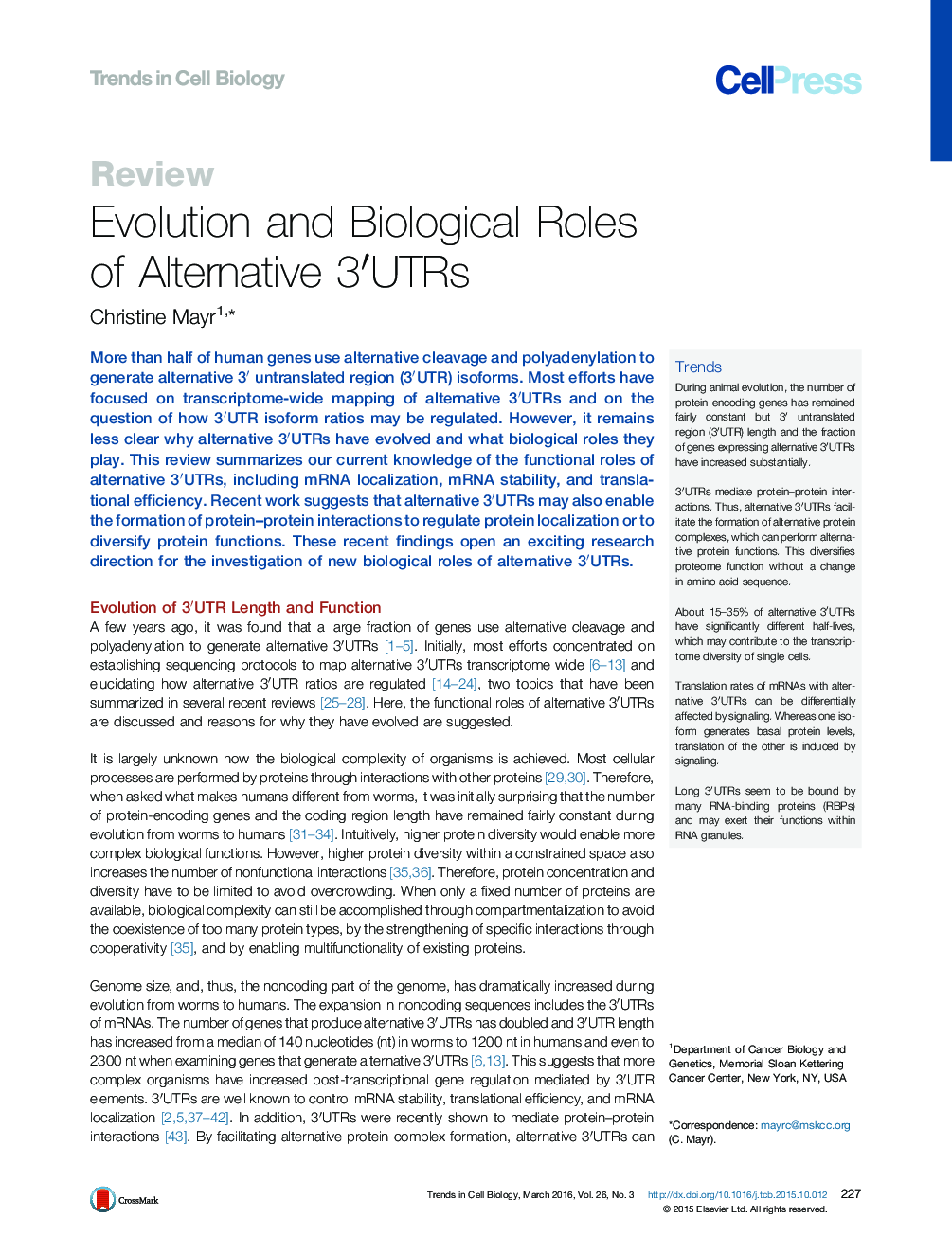| کد مقاله | کد نشریه | سال انتشار | مقاله انگلیسی | نسخه تمام متن |
|---|---|---|---|---|
| 2204348 | 1100771 | 2016 | 11 صفحه PDF | دانلود رایگان |

More than half of human genes use alternative cleavage and polyadenylation to generate alternative 3′ untranslated region (3′UTR) isoforms. Most efforts have focused on transcriptome-wide mapping of alternative 3′UTRs and on the question of how 3′UTR isoform ratios may be regulated. However, it remains less clear why alternative 3′UTRs have evolved and what biological roles they play. This review summarizes our current knowledge of the functional roles of alternative 3′UTRs, including mRNA localization, mRNA stability, and translational efficiency. Recent work suggests that alternative 3′UTRs may also enable the formation of protein–protein interactions to regulate protein localization or to diversify protein functions. These recent findings open an exciting research direction for the investigation of new biological roles of alternative 3′UTRs.
TrendsDuring animal evolution, the number of protein-encoding genes has remained fairly constant but 3′ untranslated region (3′UTR) length and the fraction of genes expressing alternative 3′UTRs have increased substantially.3′UTRs mediate protein–protein interactions. Thus, alternative 3′UTRs facilitate the formation of alternative protein complexes, which can perform alternative protein functions. This diversifies proteome function without a change in amino acid sequence.About 15–35% of alternative 3′UTRs have significantly different half-lives, which may contribute to the transcriptome diversity of single cells.Translation rates of mRNAs with alternative 3′UTRs can be differentially affected by signaling. Whereas one isoform generates basal protein levels, translation of the other is induced by signaling.Long 3′UTRs seem to be bound by many RNA-binding proteins (RBPs) and may exert their functions within RNA granules.
Journal: - Volume 26, Issue 3, March 2016, Pages 227–237